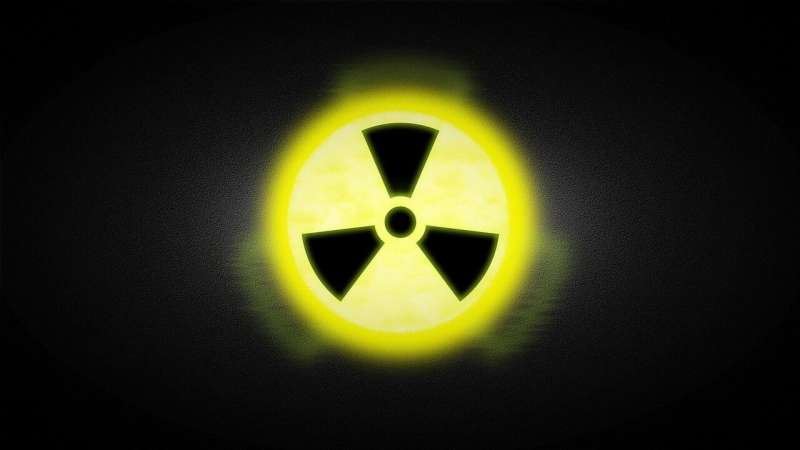February 25, 2021 report
Researchers prove fragments of splitting atomic nuclei begin spinning after scission

A large international team of researchers has proven that fragments of splitting atomic nuclei begin spinning after scission occurs during nuclear fission. In their paper published in the journal Nature, the group describes their experiments, which may one day fully explain why such fragments begin spinning in the first place.
Prior research has shown that atomic nuclei with many protons and neutrons are unstable. They are thus prone to splitting, which is known as nuclear fission. Prior research has also shown that after the split, fragments of atomic nuclei begin spinning as they are ejected from the atomic nuclei. Why they start spinning has been a mystery ever since nuclear fission was discovered over 80 years ago.
In working to understand why the fragments begin spinning, physicists have learned more about the process of splitting overall. They have found, for example, that just prior to splitting, the nucleus elongates and forms a neck—the neck elongates further and then eventually snaps, a process known as scission—and that is when splitting occurs.
Once scission was discovered, physicists began theorizing about why a neck would form and lead to splitting of the nucleus. Also, they began wondering whether spinning of the fragments began before or after scission occurred. In this new effort, the researchers carried out experiments showing that spinning starts after scission.
The work involved studying the fragments that resulted from fission of several types of unstable elements, such as uranium-238 and thorium-232. As part of their study, they focused intently on the gamma rays released after fission. They noted that these rays convey information regarding the spin of the fragments they were studying. They further expected that if the spin that resulted from fission came before scission, then all the fragments in a given area would almost certainly have an equal spin, but opposite of one another. But they found that was not the case. Instead, their spins were all completely independent of one another. This finding strongly suggests that the spinning starts after scission.
The researchers also theorize that as the nucleus grows longer and splits, the remnants that result may resemble a teardrop. Such fragments, they suggest, would then likely move in ways to reduce their surface shape (as bubbles do) and in so doing, release energy that would force them to start spinning.
More information: J. N. Wilson et al. Angular momentum generation in nuclear fission, Nature (2021). DOI: 10.1038/s41586-021-03304-w
Journal information: Nature
© 2021 Science X Network





















